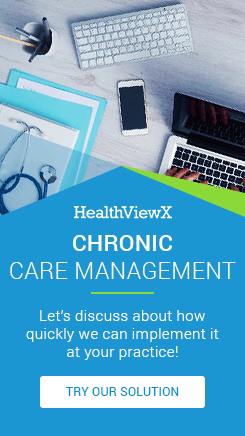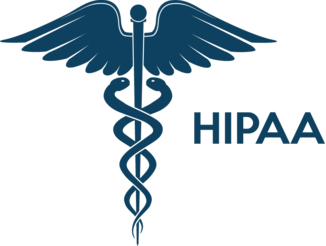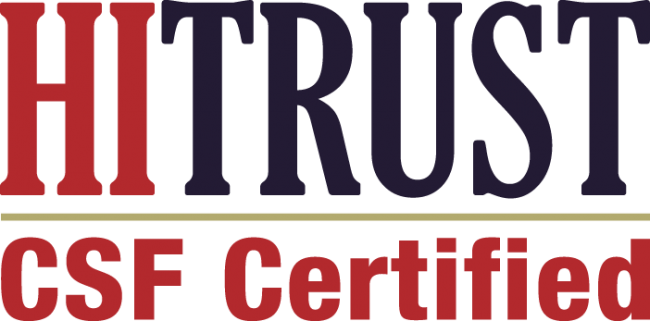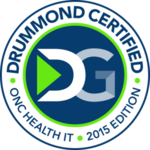The American healthcare system stands at a crossroads. Despite spending more per capita on healthcare than any other developed nation, the United States consistently ranks poorly in health outcomes and patient satisfaction. At the heart of this paradox lies a fundamental challenge: fragmentation. The disconnected nature of our healthcare delivery system creates barriers to effective patient care, leading to inefficiencies, duplicated efforts, and ultimately, compromised patient outcomes.
The Fragmentation Crisis: By the Numbers
The scope of healthcare fragmentation in the United States is staggering. The U.S. health care system is so fragmented that primary care doctors struggle to coordinate patient care as frequently as providers in other high-income countries, according to research from the Commonwealth Fund. This fragmentation manifests in multiple ways:
Financial Impact: Healthcare profit pools will grow at a 7 percent CAGR, from $583 billion in 2022 to $819 billion in 2027, yet much of this growth is driven by inefficiencies rather than improved outcomes. The system’s fragmented nature contributes to unnecessary administrative costs, duplicated services, and missed opportunities for preventive care.
The Human Cost of Fragmentation
Beyond the statistics lies the human impact of fragmented care. Patients navigate a maze of specialists, each with their systems, protocols, and communication preferences. Critical information gets lost in translation between providers, leading to:
- Delayed diagnoses and treatment
- Medication errors and adverse drug interactions
- Duplicated tests and procedures
- Gaps in follow-up care
- Patient frustration and decreased satisfaction
- Increased healthcare costs for both patients and providers
Consider the typical patient with multiple chronic conditions. They might see their primary care physician, a cardiologist, an endocrinologist, and a mental health provider—all within different health systems. Each provider may have incomplete information about the patient’s overall health status, medications, and treatment plans. This fragmentation can lead to contradictory treatments, dangerous drug interactions, and a patient who feels lost in the system.
Enter HealthViewX: A Comprehensive Care Orchestration Solution
In this landscape of fragmentation, HealthViewX emerges as a beacon of hope—a comprehensive care orchestration platform designed to bridge the gaps in healthcare delivery. HealthViewX helps health systems personalize care pathways for improved patient experience and outcomes, transforming the way healthcare providers coordinate and deliver care.
The HealthViewX Advantage
HealthViewX addresses fragmentation through several key pillars:
- Unified Care Coordination HealthViewX is at the forefront of enabling a collaborative platform for better care coordination & efficiency of care to enhance the provider-patient relationship. The platform serves as a central hub where all care team members can access real-time patient information, coordinate treatments, and communicate seamlessly.
- Comprehensive Care Management Suite HealthViewX’s Care Management Application Suite offers a technology-enabled approach to addressing pressing healthcare challenges, leveraging advanced analytics to identify high-risk patients. This proactive approach enables healthcare organizations to intervene before problems escalate, improving outcomes while reducing costs.
- Streamlined Referral Management A care orchestration platform for managing both inbound and outbound patient referrals that enables greater convenience for healthcare providers, payers, and most importantly, patients. The referral management system ensures that patients receive timely, appropriate specialist care while maintaining continuity of information across providers.
- Enhanced Patient Engagement HealthViewX’s smart integrated solution empowers providers to deliver 2-way conversational messaging at every digital touchpoint of the patient journey. This continuous engagement keeps patients informed, involved, and compliant with their treatment plans.
Measurable Impact: Real Results from Real Implementations
The effectiveness of HealthViewX’s approach is demonstrated through concrete outcomes achieved by healthcare organizations using the platform:
Operational Efficiency Gains:
- 50% referral processing time improvement
- 40% reduced referral/revenue leakage
- 90% reduction in incomplete referrals
- 30% reduction in phone calls from patients
- 35% increased referral loop closures
Financial Performance: Practices can earn an average of $500–$1,000 per patient annually through CMS reimbursements. Providers leveraging HealthViewX report up to a 40% increase in care management revenues within 6 months.
Scale and Reliability: HealthViewX has helped deliver 5 Million plus Patient Encounters with its platform and suite of solutions, demonstrating the platform’s ability to handle high-volume operations while maintaining quality and compliance.
Quality Assurance: Active client base across 5 continents with 100% CMS audit pass rate, ensuring that healthcare organizations can confidently meet regulatory requirements while improving patient care.
Technology Features That Enable Coordination
HealthViewX’s success stems from its comprehensive technology platform that addresses the root causes of healthcare fragmentation:
Interoperability and Integration
HealthViewX, using its interoperability engine – HealthBridge, integrates seamlessly with electronic health record (EHR) systems, ensuring that referral information is easily accessible and up-to-date. This integration eliminates the need for duplicate data entry and improves overall data accuracy.
Advanced Analytics and Reporting
The platform’s reporting and analytics tools provide valuable insights into referral patterns, provider performance, and patient outcomes. Providers can use these insights to optimize their referral processes, enabling continuous improvement in care delivery.
User-Centric Design
Highlights of HealthViewX include user-centric workflow customization, real-time tracking and timeline view, bi-directional EMR integration, multi-channel referral consolidation, automated notifications and reminders, insurance pre-auth form automation, scheduler integration, intelligent provider match, HIPAA-compliant document transfer, and actionable dashboard and analytics.
The Future of Healthcare Coordination
As healthcare continues to evolve, several trends are shaping the future of care coordination:
Value-Based Care Adoption: Healthcare organizations are increasingly moving toward value-based care models that reward outcomes rather than volume. HealthViewX’s care orchestration platform aligns perfectly with this shift, enabling providers to manage patient populations more effectively and demonstrate improved outcomes.
Cybersecurity Concerns: In 2024, the US experienced the highest number of significant cyberattacks in healthcare, with the greatest disruption on record. HealthViewX addresses these concerns with robust security measures, including HIPAA compliance and SOC 2 certification.
Expansion of Care Settings: With the projected growth in ambulatory surgery and home health services, coordination across diverse care settings becomes increasingly critical. HealthViewX’s platform is designed to manage care across these varied environments seamlessly.
Recognition and Validation: Listed in Newsweek & Statista’s World’s Best Digital Health Companies 2024, HealthViewX has gained recognition for its innovative approach to healthcare coordination.
Addressing Healthcare Disparities Through Coordination
Effective care coordination plays a crucial role in addressing healthcare disparities. The Commonwealth Fund 2024 State Health Disparities Report highlights ongoing challenges in achieving equitable healthcare access and outcomes. HealthViewX’s platform helps address these disparities by:
- Ensuring consistent care protocols across all patient populations
- Facilitating access to specialist care through streamlined referral processes
- Providing real-time translation and communication tools
- Supporting community health workers and care coordinators
- Enabling population health management to identify and address gaps in care
Implementation Strategies for Healthcare Organizations
Healthcare organizations considering care coordination solutions should focus on several key areas:
1. Stakeholder Engagement
Successful implementation requires buy-in from all stakeholders, including physicians, nurses, administrative staff, and patients. HealthViewX’s user-centric design helps facilitate this engagement by making the platform intuitive and valuable for all users.
2. Workflow Integration
Scalable staffing models (in-house, hybrid, outsourced) for optimized ROI allow organizations to implement HealthViewX in a way that fits their existing workflows and resource constraints.
3. Performance Measurement
Organizations should establish clear metrics for success, including patient satisfaction scores, care coordination efficiency measures, and financial performance indicators. HealthViewX provides comprehensive analytics to support these measurements.
4. Continuous Improvement
The platform’s analytics capabilities enable organizations to continuously refine their care coordination processes, identifying bottlenecks and opportunities for improvement.
The Economic Case for Care Coordination
The financial benefits of effective care coordination extend beyond individual healthcare organizations to the broader healthcare system:
Reduced Administrative Costs: By eliminating duplicate data entry and streamlining communication, care coordination platforms like HealthViewX reduce administrative overhead significantly.
Improved Resource Utilization: Better coordination leads to more appropriate use of specialist services, reducing unnecessary referrals while ensuring patients receive timely care when needed.
Enhanced Revenue Opportunities: Tailored for FQHCs, primary care clinics, health systems, specialty clinics, aggregators, and billing services, HealthViewX helps diverse healthcare organizations capture revenue opportunities through improved care management.
Population Health Management: By enabling proactive identification and management of high-risk patients, care coordination platforms help prevent costly emergency interventions and hospitalizations.
Conclusion: From Fragmentation to Transformation
The journey from healthcare fragmentation to coordinated care represents one of the most significant opportunities for improving patient outcomes while controlling costs in the American healthcare system. HealthViewX stands at the forefront of this transformation, providing healthcare organizations with the tools and capabilities they need to orchestrate patient care effectively.
The platform’s comprehensive approach—combining referral management, care coordination, patient engagement, and advanced analytics—addresses the root causes of healthcare fragmentation. With proven results including improved efficiency, enhanced patient satisfaction, and increased revenue, HealthViewX demonstrates that effective care coordination is a theoretical ideal and a practical reality.
As healthcare continues to evolve toward value-based care models and distributed care settings, the importance of platforms like HealthViewX will only grow. Organizations embracing comprehensive care coordination today will be better positioned to succeed in tomorrow’s healthcare landscape, delivering better patient outcomes while achieving sustainable financial performance.
The fragmentation that has long plagued American healthcare is not an insurmountable challenge—it’s an opportunity for transformation. Through platforms like HealthViewX, healthcare organizations can turn the complexity of modern healthcare into a competitive advantage, delivering coordinated, patient-centered care that improves outcomes for everyone involved.
The future of healthcare lies not in managing fragmentation, but in orchestrating coordination. HealthViewX provides the conductor’s baton for this transformation, enabling healthcare organizations to create harmony from what was once chaos.


